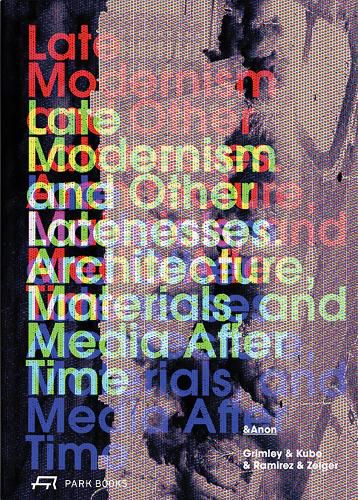Readings Newsletter
Become a Readings Member to make your shopping experience even easier.
Sign in or sign up for free!
You’re not far away from qualifying for FREE standard shipping within Australia
You’ve qualified for FREE standard shipping within Australia
The cart is loading…






Reflects on the modern impulse for rushed production, expansion, and consumption. Hurry up, we're late: The early decades of the 21st century have demonstrated that we are already behind. Concepts like Moore's Law, accelerationism, Hyperloop, and rapid news cycles push the notion that speed is the answer. Modern day futurists argue that salvation lies in technology and outer space, while architecture has striven to keep pace with cultural events through the late 20th century and into the present, even as we face environmental crises and build our lives around the remnants of Late Modernism. Late Modernism and Other Latenesses offers an understanding of the contradictory impulses in architecture and culture from the 1960s through the 1980s, a period rich in utopian visions and revolution but also burdened by global expansionism and crisis. Topical essays explore aspects of lateness, referring to concrete buildings and architectural projects, and to key texts from the period. The concept of lateness is used not as a backward-looking tool but as one that is simply behind the beat. The book is a reaction and rebuttal to the surging flows of finance, media, and culture that influence architectural production and its aligned disciplines, seeking for missing conditions that might redefine architecture's relationship to its cultural moment. AUTHORS: Chris Grimley is the founder and creative director of Boston-based design and communications studio SIGNALS. Michael Kubo is an architectural historian and associate professor at Rhode Island School of Design in Providence, RI. Enrique Ramirez is a writer and a historian of art and architecture, who teaches as a lecturer at Taubmann College of Architecture and Urban Planning, University of Michigan in Ann Arbor, and as a visiting associate professor at Pratt Institute in New York. Mimi Zeiger is a Los Angeles-based critic, editor, and curator. SELLING POINTS: . Features the findings of a collective research investigating the ceaseless transformations of architecture and related fields of cultural production from the 1960s through the 1980s . Offers an understanding of the contradictory urges of architecture and culture a period rich in utopian visions and revolution and burdened by global expansionism and crisis . Topical essays explore aspects of lateness, referring to concrete buildings and architectural projects, and to key texts from the period . Presents a reaction and rebuttal to the surging flows of finance, media, and culture that influence architectural production . Contributors include distinguished architects, critics, curators, educators, and writers 350 colour illustrations
$9.00 standard shipping within Australia
FREE standard shipping within Australia for orders over $100.00
Express & International shipping calculated at checkout
Reflects on the modern impulse for rushed production, expansion, and consumption. Hurry up, we're late: The early decades of the 21st century have demonstrated that we are already behind. Concepts like Moore's Law, accelerationism, Hyperloop, and rapid news cycles push the notion that speed is the answer. Modern day futurists argue that salvation lies in technology and outer space, while architecture has striven to keep pace with cultural events through the late 20th century and into the present, even as we face environmental crises and build our lives around the remnants of Late Modernism. Late Modernism and Other Latenesses offers an understanding of the contradictory impulses in architecture and culture from the 1960s through the 1980s, a period rich in utopian visions and revolution but also burdened by global expansionism and crisis. Topical essays explore aspects of lateness, referring to concrete buildings and architectural projects, and to key texts from the period. The concept of lateness is used not as a backward-looking tool but as one that is simply behind the beat. The book is a reaction and rebuttal to the surging flows of finance, media, and culture that influence architectural production and its aligned disciplines, seeking for missing conditions that might redefine architecture's relationship to its cultural moment. AUTHORS: Chris Grimley is the founder and creative director of Boston-based design and communications studio SIGNALS. Michael Kubo is an architectural historian and associate professor at Rhode Island School of Design in Providence, RI. Enrique Ramirez is a writer and a historian of art and architecture, who teaches as a lecturer at Taubmann College of Architecture and Urban Planning, University of Michigan in Ann Arbor, and as a visiting associate professor at Pratt Institute in New York. Mimi Zeiger is a Los Angeles-based critic, editor, and curator. SELLING POINTS: . Features the findings of a collective research investigating the ceaseless transformations of architecture and related fields of cultural production from the 1960s through the 1980s . Offers an understanding of the contradictory urges of architecture and culture a period rich in utopian visions and revolution and burdened by global expansionism and crisis . Topical essays explore aspects of lateness, referring to concrete buildings and architectural projects, and to key texts from the period . Presents a reaction and rebuttal to the surging flows of finance, media, and culture that influence architectural production . Contributors include distinguished architects, critics, curators, educators, and writers 350 colour illustrations